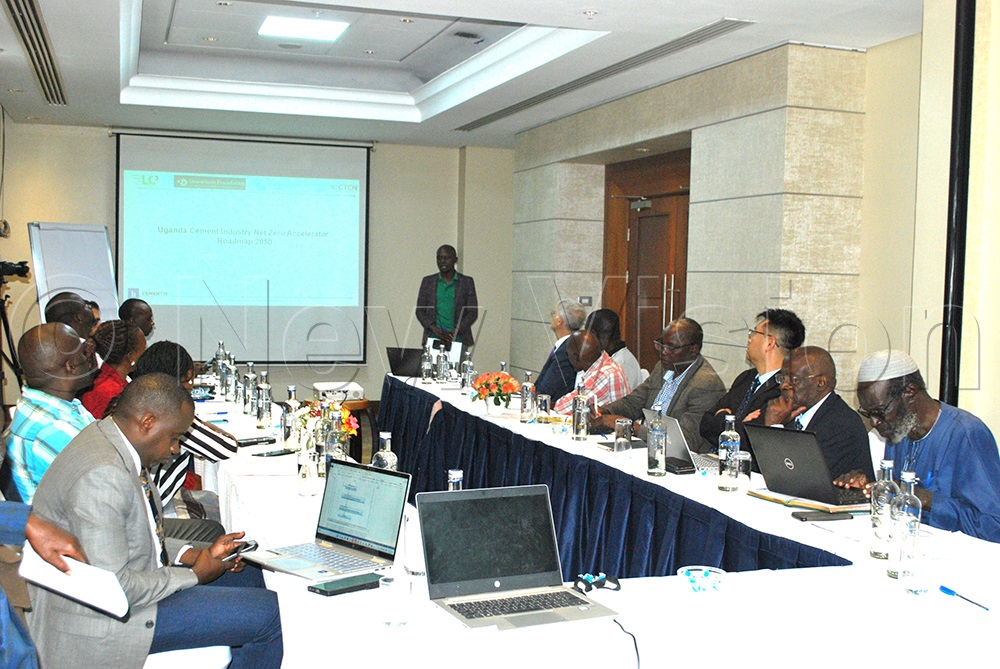Uganda pushes cement industry to slash emissions amid climate concerns
Leading manufacturers highlighted ongoing efforts to reduce emissions. Philemon Mubiru, Head of Innovation and Marketing at Hima Cement, revealed that over 50% of the company’s fuel now comes from biomass waste, including coffee husks, rice husks, and biogas.
Derrick Senyonga, Senior Climate Change Officer, Ministry of Water and Environment. (Photo by Jovita Mirembe)
________________
The Government has urged cement and concrete producers to adopt cleaner technologies by 2030 to curb carbon emissions, a major driver of climate change. The directive, issued during a high-level stakeholders’ meeting at the Sheraton Kampala Hotel, shows the need to address the sector’s environmental footprint.
Carbon emissions refer to the release of carbon dioxide (CO2) and other greenhouse gases into the atmosphere, primarily from the burning of fossil fuels and other human activities. These emissions are a major contributor to climate change, as they trap heat and warm the planet.
Water ministry senior climate change officer Derrick Senyonga warned that cement manufacturing, responsible for significant carbon dioxide (CO₂) emissions from both chemical processes and energy-intensive methods, poses severe risks to public health and the climate.
“These emissions accelerate global warming. Producers must prioritise low-carbon technologies to align with global climate goals,” he stressed.
Leading manufacturers highlighted ongoing efforts to reduce emissions. Philemon Mubiru, Head of Innovation and Marketing at Hima Cement, revealed that over 50% of the company’s fuel now comes from biomass waste, including coffee husks, rice husks, and biogas.
“We aim to reach 80% green energy use,” Mubiru said, adding that co-processing industrial waste like used tires and paint further cuts emissions. 
Some of the participants who attended the meeting. (Photo by Jovita Mirembe)
Tororo Cement deputy plant manager, Dharmendra Pratap Singh, noted explorations into natural alternatives for cement production to lower emissions. However, both companies flagged financial barriers to acquiring advanced equipment needed for net-zero targets. “Government support is critical to fund these transitions,” Singh emphasised.
Health ministry climate and health officer Dr Didacus Namanya urged stakeholders to invest in research for innovative emission-reduction technologies. “Climate action requires collaboration—government, industry, and researchers must work together,” he said.
The meeting, attended by government agencies, manufacturers, and private sector leaders, concluded with a roadmap to fast-track decarbonization. While progress is visible, the industry’s success hinges on policy support, funding, and sustained innovation to balance economic growth with environmental stewardship.